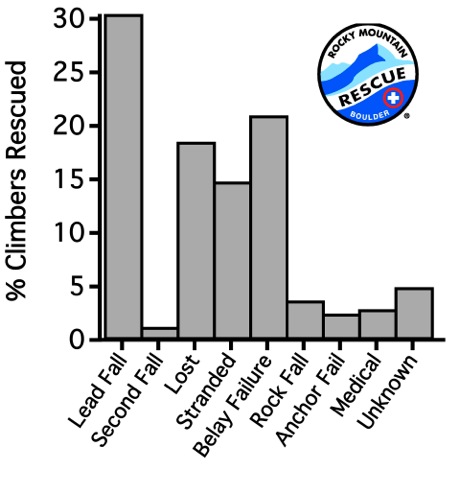|
|
Rock Climbing Rescues: Causes, Injuries, and Trends in Boulder County, Colorado

|
28 March-2013: 1 hour
video presentation based on the published paper.
2 July-2012:
Wilderness and Environmental Medicine Journal, tells the story by the numbers
of Boulder County climbing rescues from
1998 - 2011.
Rock Climbing Rescues: Causes, Injuries and Trends in Boulder County,
Colorado (PDF, 8 pages, 400 KB) makes the best of the bad situations
for almost 430 climbers
involved in accidents from over 14 years. If the dryness of the scientific journal
is too much, we have also self web published the companion addendum
Rock Climbing Rescues in Boulder County, Colorado and Eldorado Canyon State
Park, Colorado, 1998 - 2011 that compares accidents within Eldorado Canyon,
to all of Boulder County.
Take aways for climbers:
- Anchors rarely fail (2.5% of total), and when they do it is because of
inexperience in setup.
- 20% of all accidents could have been prevented by better belay practices
such as tying a knot in the end of the rope, or wearing belay gloves.
- Rock fall causes a small number of accidents (4.5% of total), and may be
correlated to the freeze thaw cycles of spring and climber use patterns. In
early spring climbing checking the rock you're about to climb on for security
is a prudent preventative measure.
- Prior knowledge of climb rappel anchors and walk offs, and taking a
headlamp, will prevent a lot of rescues (up to 45% of total).
- The common injuries sustained are to the legs/ankles (30%) and to the
head and spine (30%). Knowledge of how to improvise splinting and how to
assess spinal injuries might be a great addition to a climbers toolkit.
|
|







